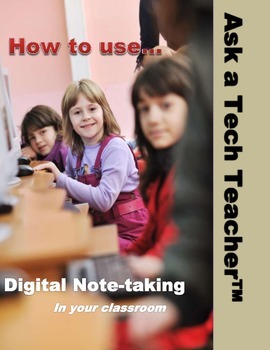How to use Digital Notetaking In your classroom
- PDF
Also included in
- Lots of teachers want to integrate tech into their class but picking what to use among the thousands of offerings is daunting. Here are five tools you can start Day One and use throughout the year:25 Digital Tools in the ClassroomThe 56-page 25 Digital Tools in the Classroom is a thorough discussionPrice $18.86Original Price $24.96Save $6.10
Description
Digital Notetaking in the classroom shares a variety of user-friendly, intuitive digital notetaking methods that students will want to use. To start with, digital notetaking has benefits paper-and-pencil notetaking doesn’t like sharing, collaborating, saving everywhere. Have students become familiar with approaches from traditional word processing tools to web-based tools like, Google Docs, Flipboard, Evernote/OneNote, Twitter.
What’s included:
* brief summary of project
* suggested prior knowledge
* Essential Question
* Big Idea
* Common Core alignment
* ISTE alignment
* Best Practices
* suggested domain and academic vocabulary
* likely tech problems that will arise
* materials required
* teacher prep required
* step-by-step instructions
* enrichment to dig deeper into the subject
* more information to support specific learning
* assessment strategies
* sample grading rubric






